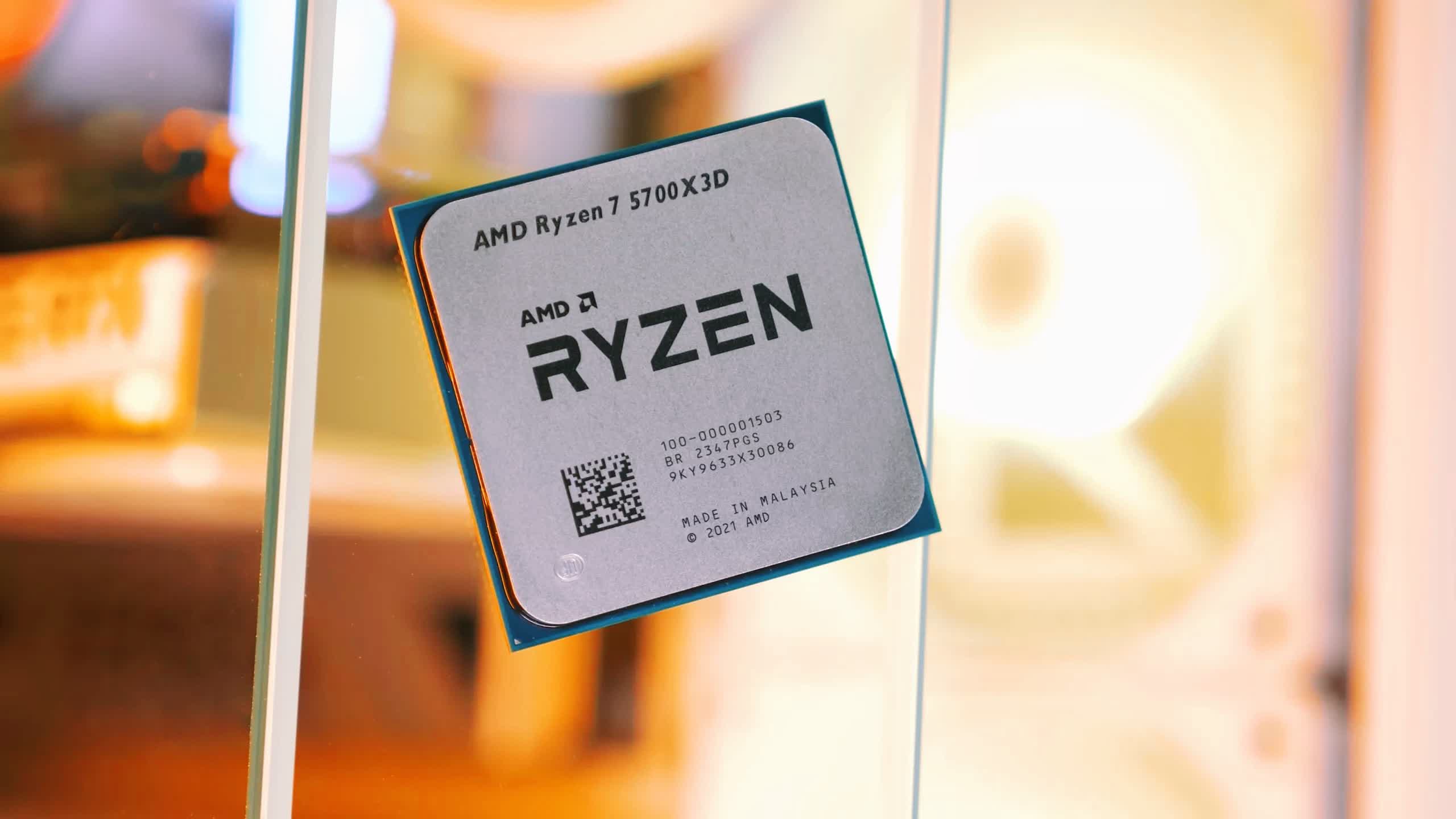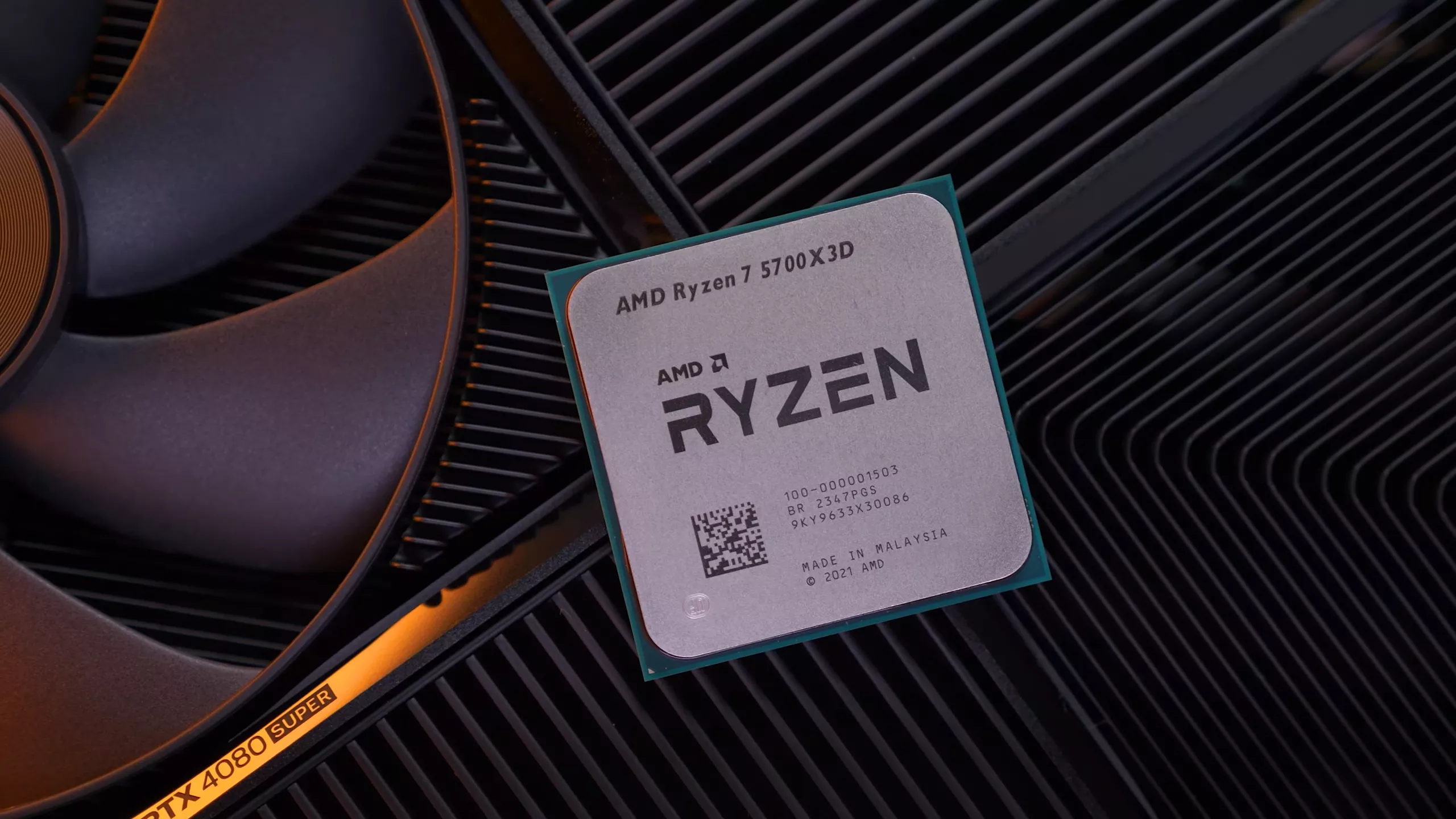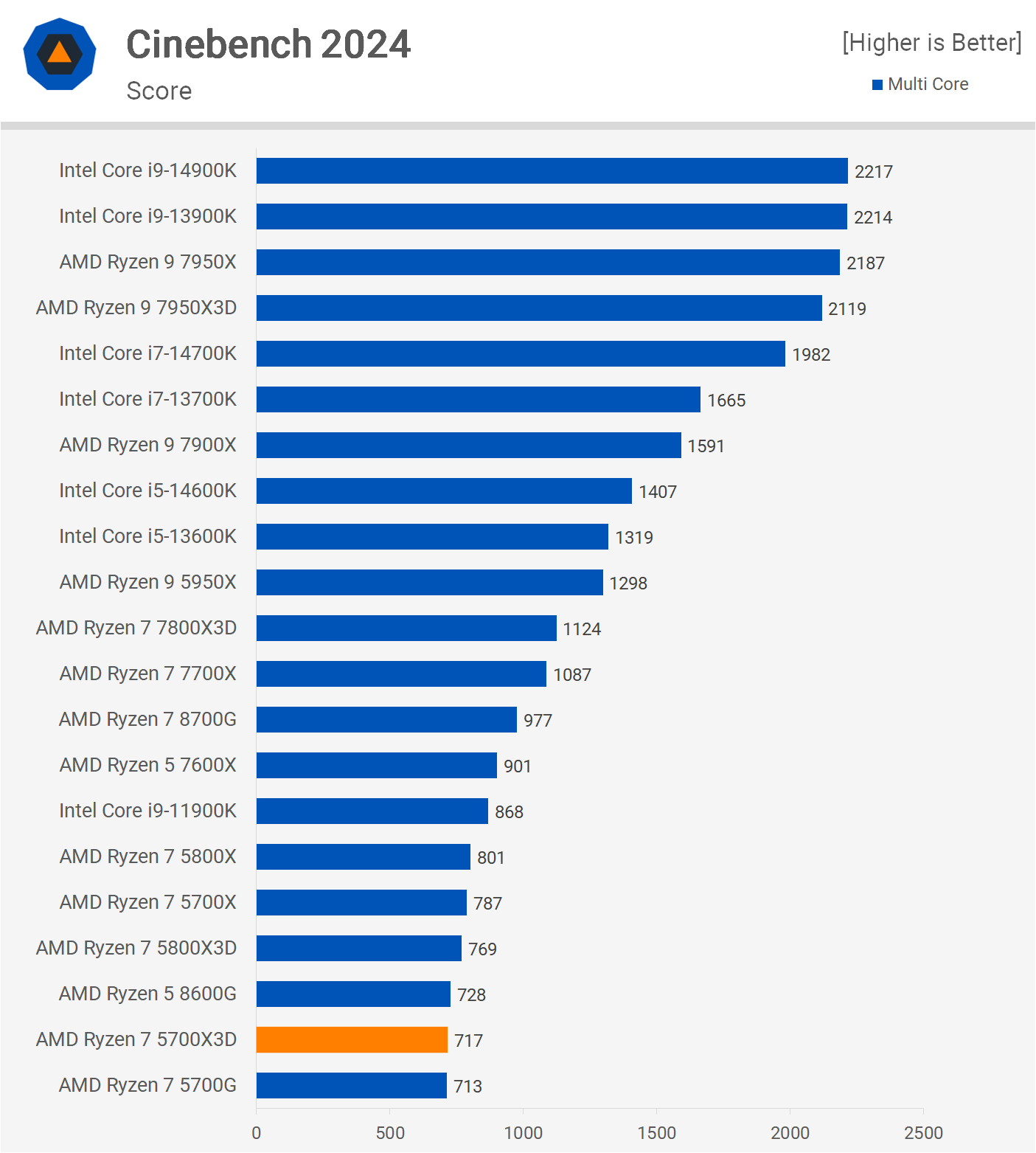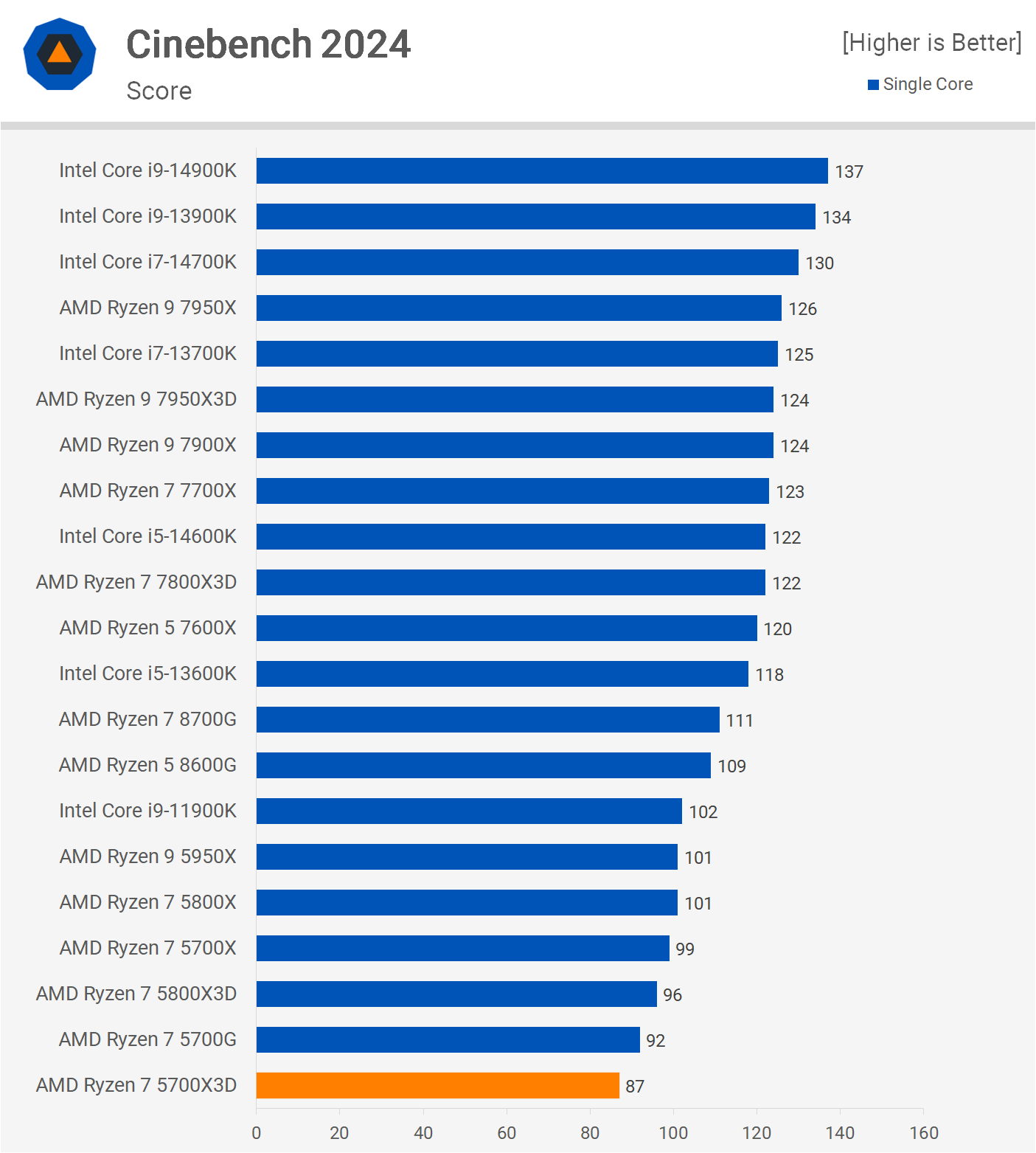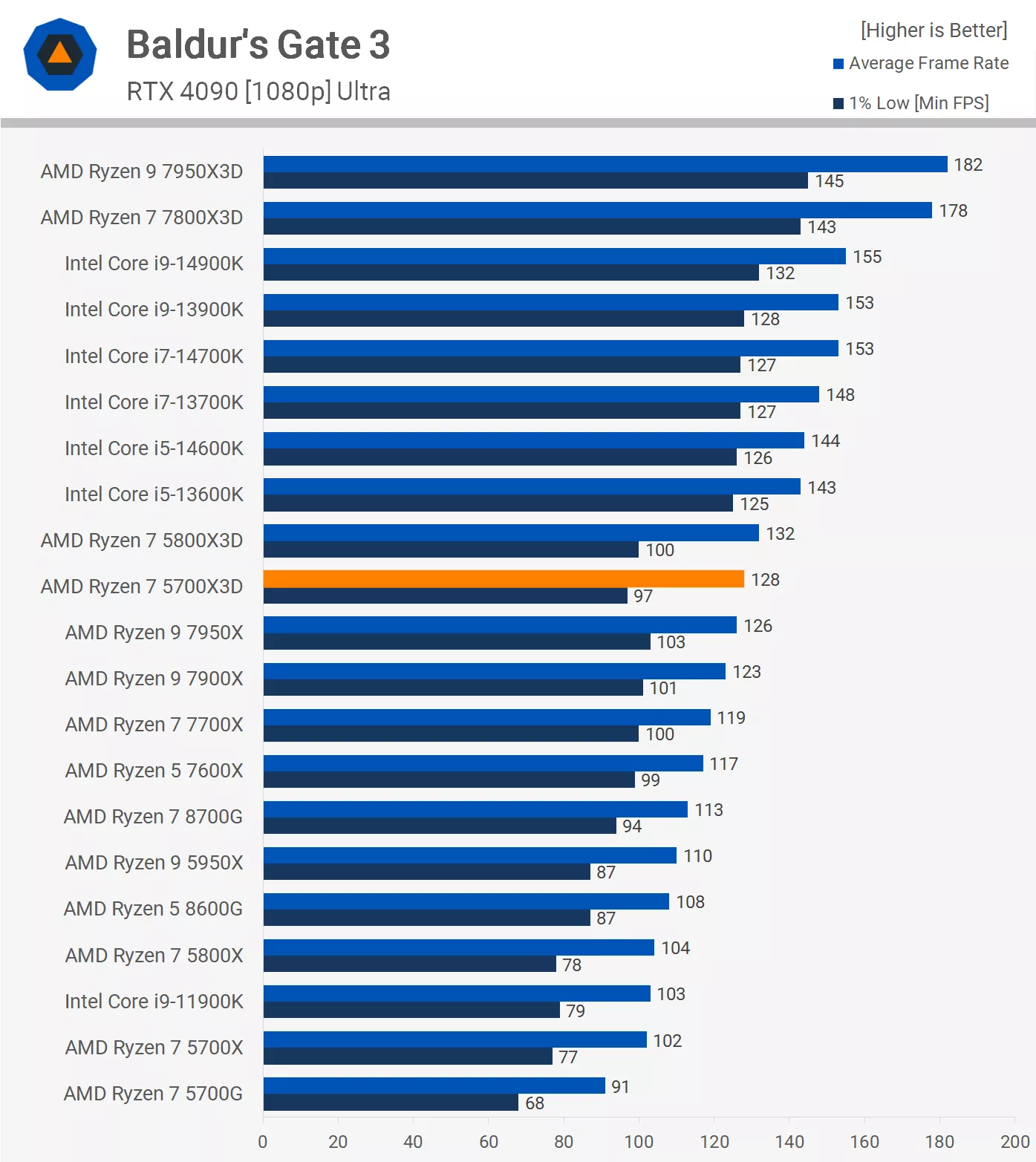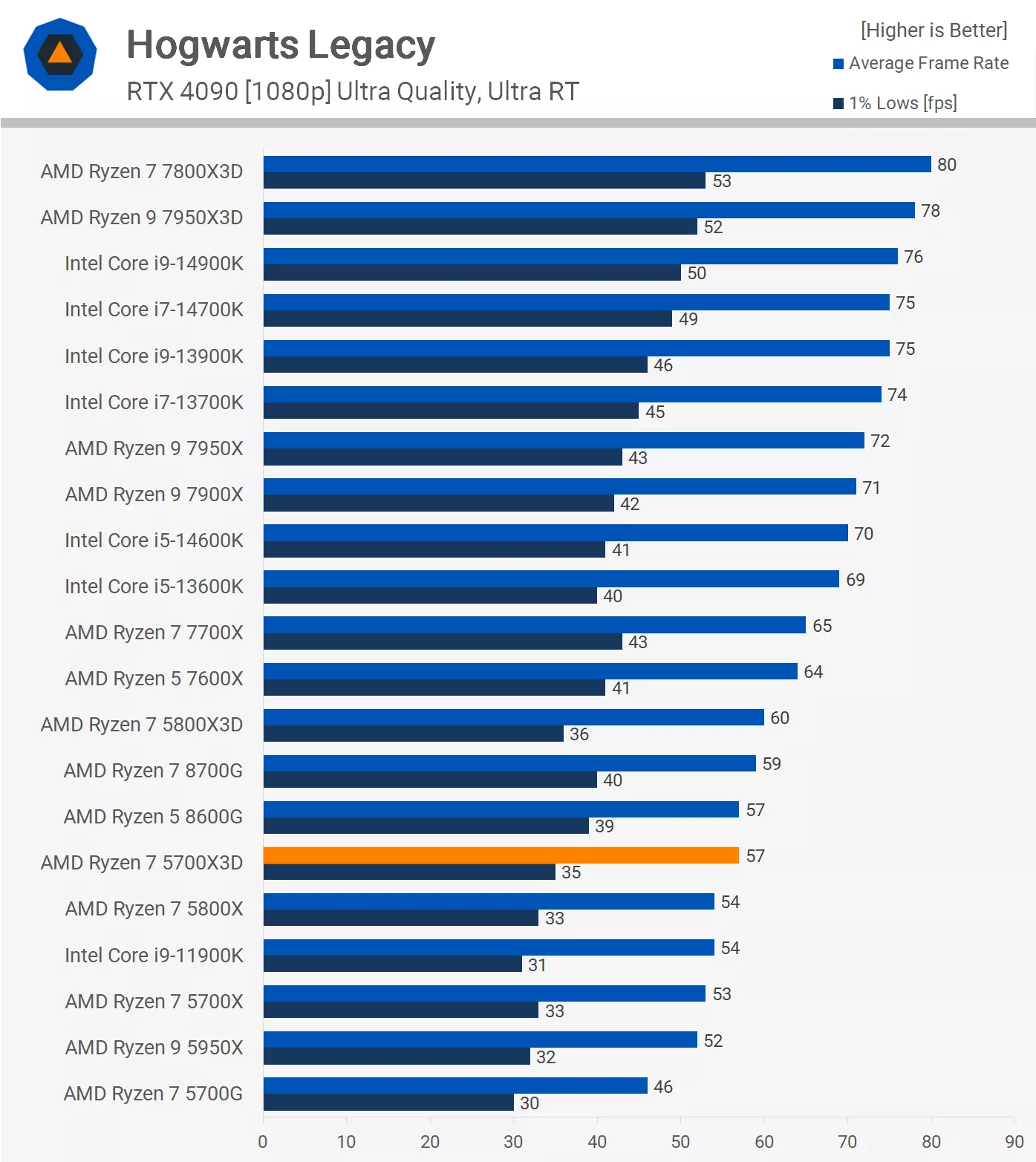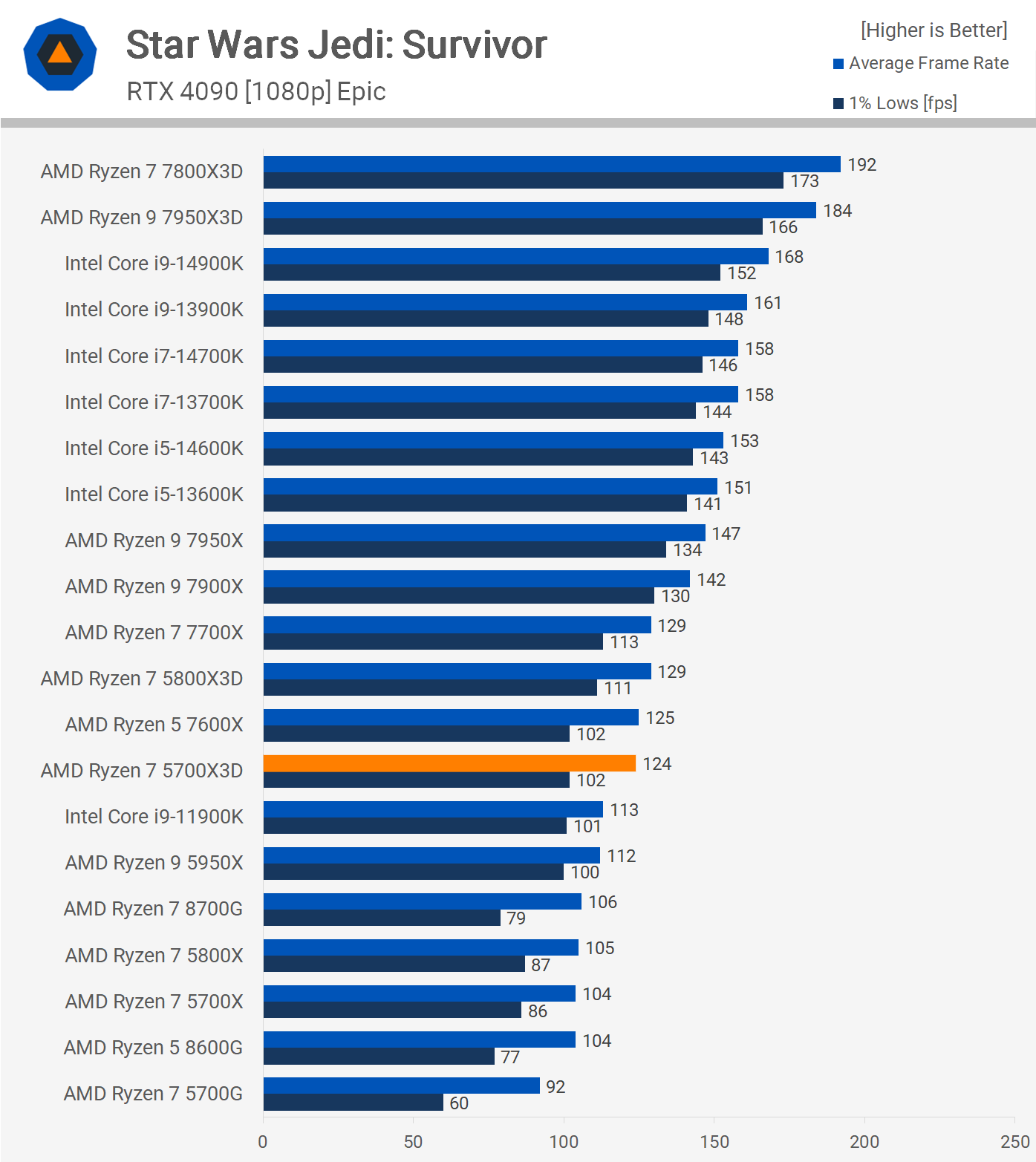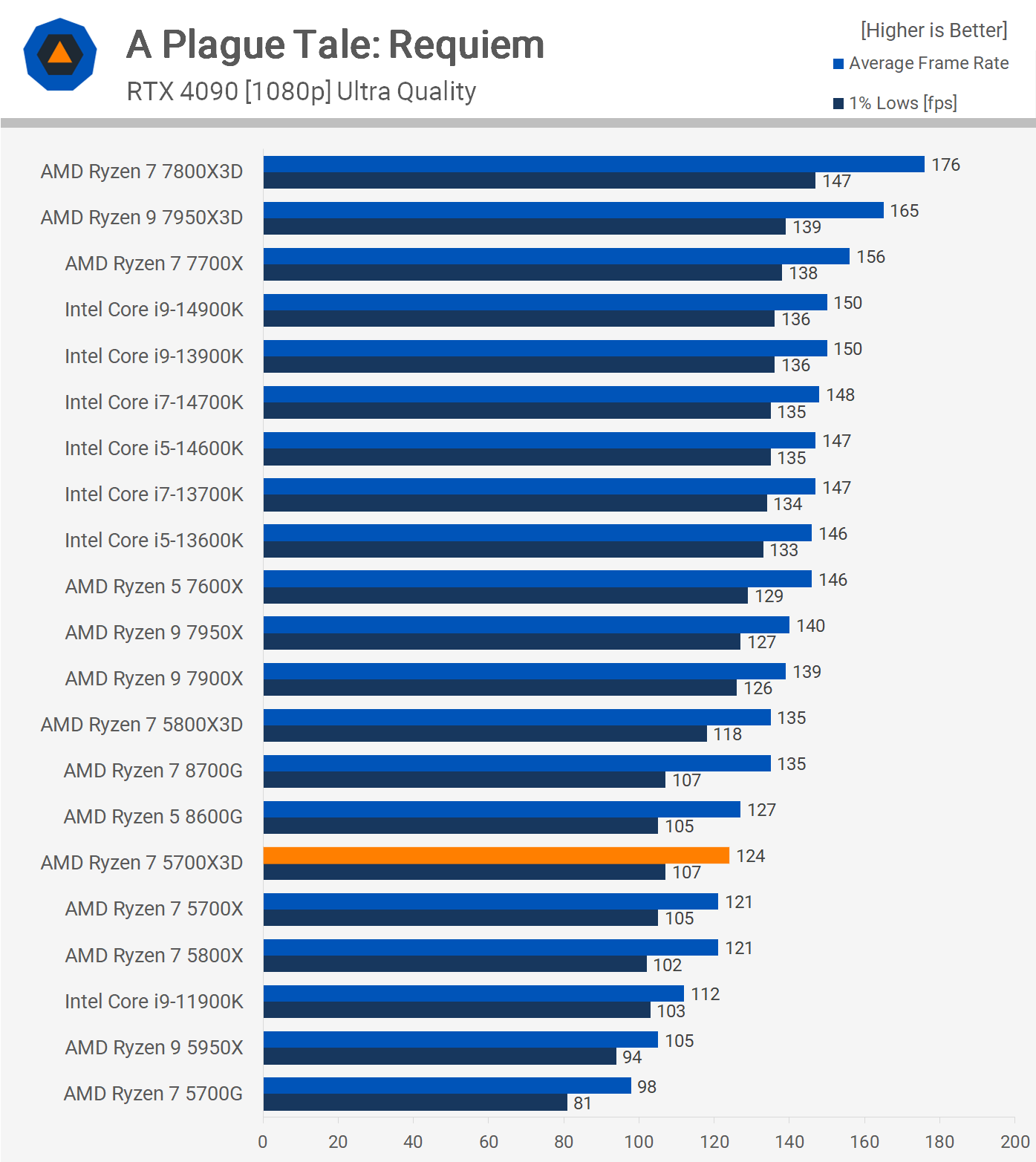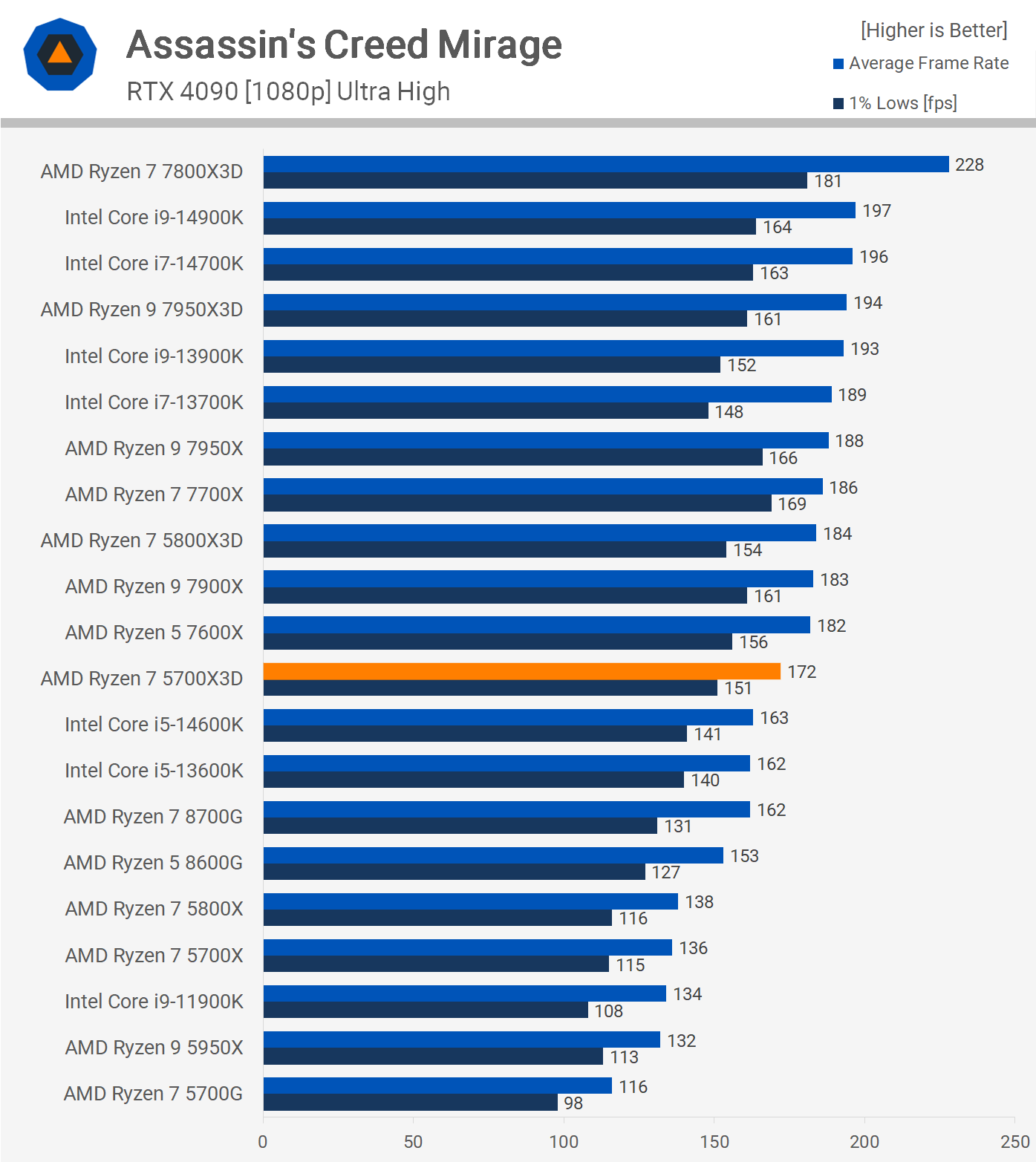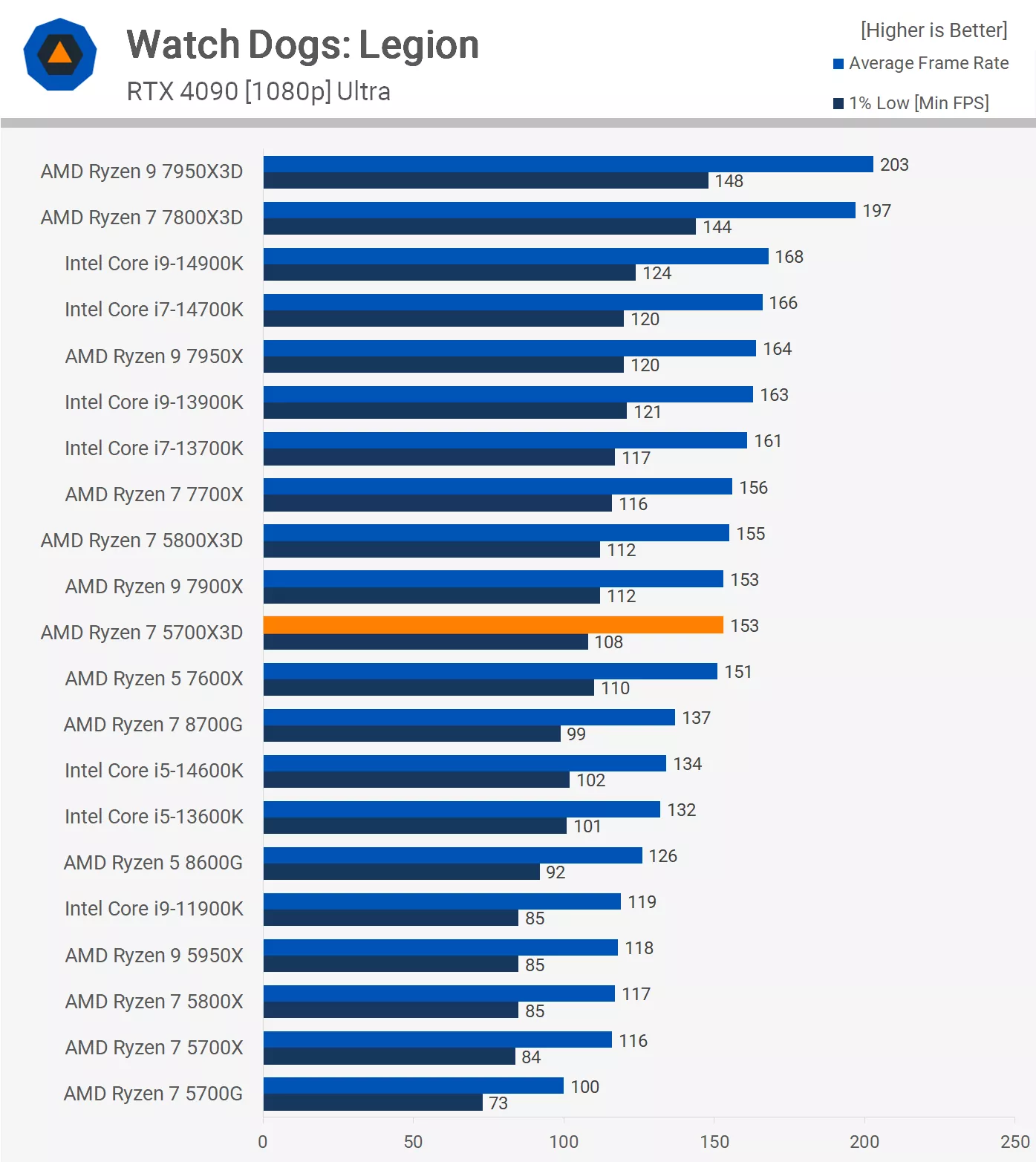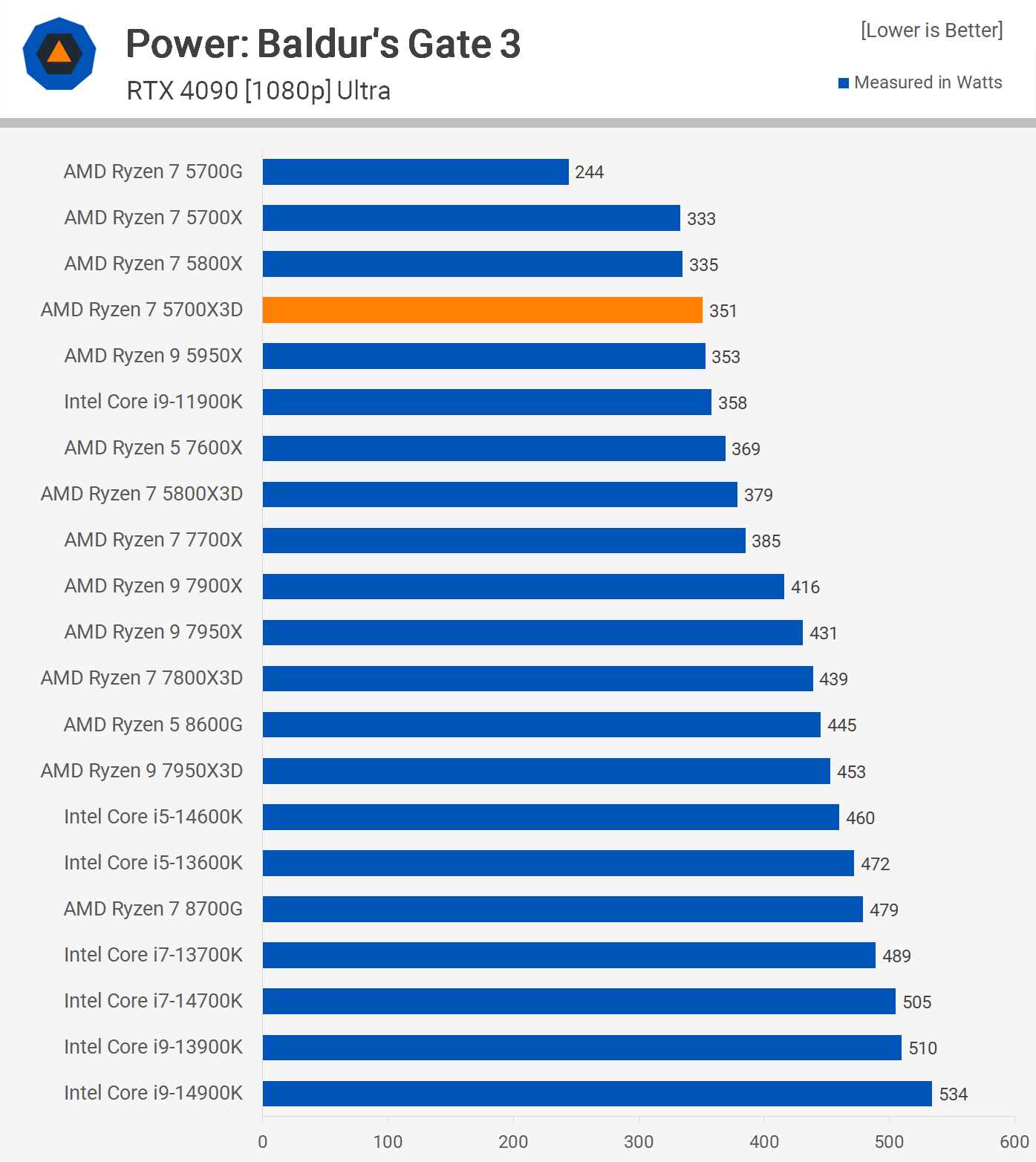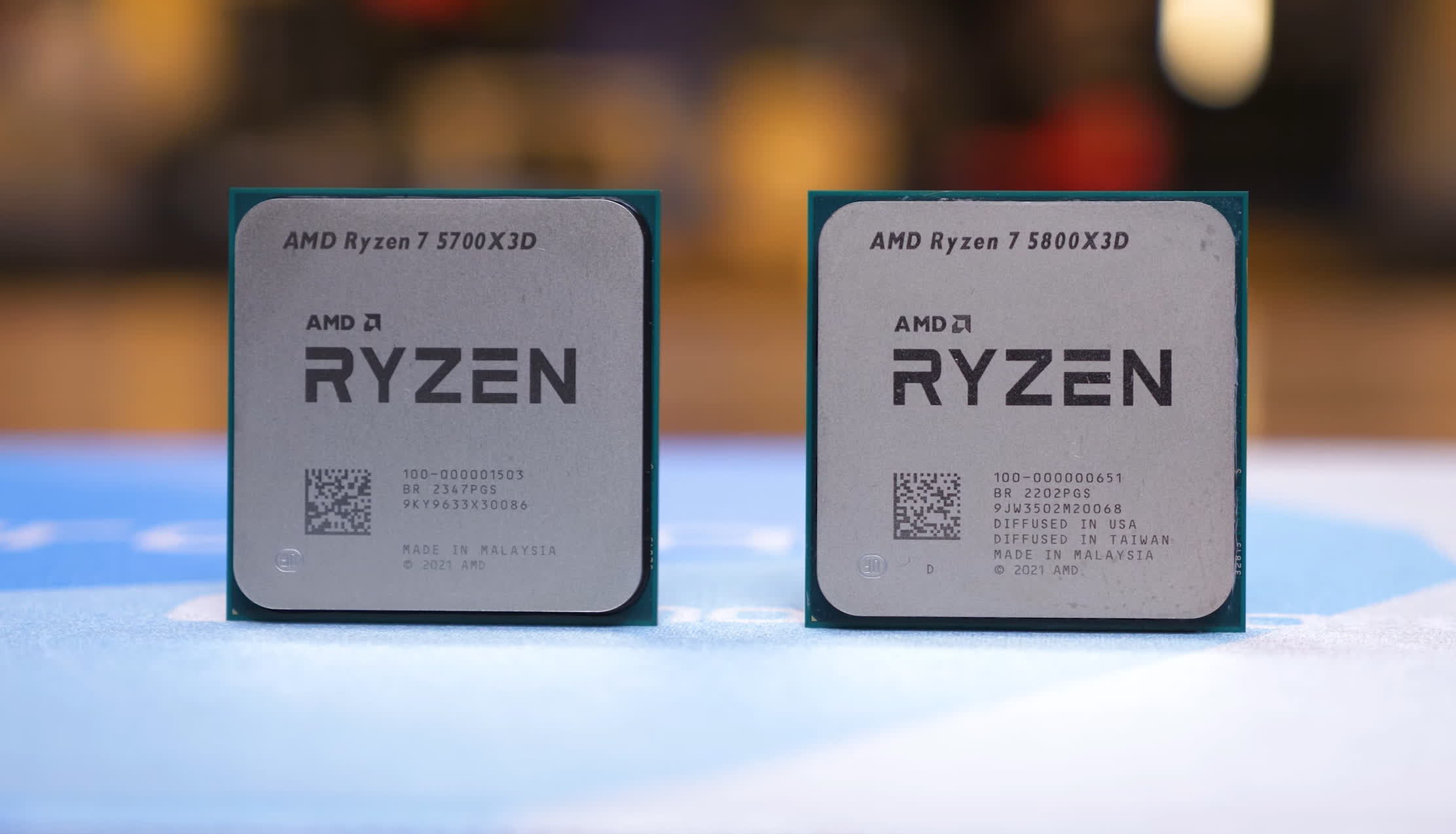AMD's newly released Ryzen 7 5700X3D, while technically new, is not entirely so. What we have here is binned silicon that couldn't be sold as a 5800X3D since it didn't meet the clock specifications. But instead of throwing it away, AMD has cut it down some and is offering it at just $250.
Compared to the 5800X3D, the new 5700X3D has reduced core clocks by 9%, lowering the maximum boost frequency from 4.5 GHz to 4.1 GHz. Additionally, we're observing a 12% reduction in base clocks. Aside from that, everything else remains the same, except for that price, of course.
Technically, the 5700X3D commands a 44% discount in MSRP when compared to the 5800X3D, but that part hasn't sold at MSRP for a long time and today can be had for $320. Even so, this represents a 22% discount for what will likely be less than a 10% reduction in performance.
Therefore, for those who have invested in the AM4 platform and are seeking an affordable upgrade but couldn't justify spending $320 on the 5800X3D, the new $250 5700X3D might be the compelling option they need. Let's delve into the benchmarks to determine how likely this scenario is…
Benchmarks
We're not going to delve into application benchmarks in this review, as we believe the vast majority of you are more interested in gaming performance. This is typically where 3D V-Cache offers the most significant improvements over the standard Ryzen CPU models.
For instance, when conducting the Cinebench multi-core test, we find that the 5700X3D is actually 9% slower than the 5700X. This decrease in performance is attributed to its 11% lower clock speed, and as mentioned, the massive 96 MB L3 Cache does not aid in this particular test.
In comparison to the 5800X3D, we observe a 7% reduction in performance for this test. By today's standards, the 5700X3D does not appear particularly impressive in this all-core workload, trailing approximately 20% behind the 6-core/12-thread 7600X.
Examining single-core performance offers a clear view of how technology has advanced since Zen 3. Furthermore, reducing some frequency from the 5700X3D has placed it at the bottom of our graph, making it 9% slower than the 5800X3D. However, as mentioned earlier, the massive 3D V-Cache offers no advantage in this scenario. Hence, let's proceed to some tests that do benefit from a substantial L3 cache.
Moving on to gaming benchmarks, first up is Baldur's Gate 3. In this title, the 5700X3D is only 3% slower than the 5800X3D, delivering performance comparable to the Ryzen 9 Zen 4 parts, such as the flagship 7950X, which is indeed impressive. However, the non-3D V-Cache Zen 4 processors do not perform as well in this game.
When comparing the Intel Core i5-13600K and 14600K, the 5700X3D is just 11% slower, while it also falls 28% short of AMD's current flagship gaming CPU, the 7800X3D. Overall, the performance is solid, and given the price point, it could be considered exceptional.
Next, we examine Cyberpunk 2077, where the 5700X3D is merely 4% slower than the 5800X3D, aligning it with the Ryzen 5 7600X. It was also found to be 7% faster than the new 8700G. Additionally, there's a significant 22% improvement over the standard 5700X.
For those already on the AM4 platform, the 5700X3D presents a very appealing upgrade option. However, for those considering spending more on a full system upgrade, performance similar to the 7600X can be expected, or up to 36% greater performance with an option like the 7800X3D.
Hogwarts Legacy was tested with ray tracing enabled, and in this scenario, the 5700X3D is 5% slower than the 5800X3D, matching the performance of the new 8600G APU. When compared to the non-3D V-Cache model, the standard 5700X, the 5700X3D demonstrates an 8% performance increase in this case.
It's also 11% slower than the 7600X and significantly, 29% slower than the 7800X3D. However, considering the cost of the CPU and the supporting platform, the 5700X3D offers unparalleled value.
Finally, in Star Wars Jedi: Survivor, the 5700X3D is only marginally slower than the 5800X3D, by 4% in this case. This performance is comparable to the 7600X and even the 7700X.
Moreover, when compared to the standard 5700X, there's an almost 20% performance uplift, despite being 35% slower than the 7800X3D.
Moving on to ACC, the 5700X3D was 4% slower than the 5800X3D, delivering performance comparable to a range of CPUs based on much newer architectures that happen to cost significantly more, such as the Core i5-14600K and Ryzen 9 7900X, for example. It was also 12% faster than the 7600X, a performance boost made possible by the game's significant benefit from cache performance.
Spider-Man Remastered, tested with ray tracing enabled, can challenge the performance of CPUs supported by DDR4 memory due to the game's heavy reliance on memory bandwidth. Overall, the 5700X3D performs very well, although the 1% lows are noticeably lower than those of comparable DDR5-enabled CPUs, such as the 13600K, for example.
Once again, the 5700X3D is just 4% slower than the 5800X3D, making it 8% faster than the new 8700G APU and almost 20% faster than the standard 5800X, at least when comparing average frame rates.
The results in A Plague Tale: Requiem are intriguing; here, the 5700X3D is 8% slower than the 5800X3D, a margin that is considerably wider than the typical 4% we've observed so far. This wider margin makes sense, considering it can clock up to 9% slower depending on the workload. Surprisingly, we haven't seen more of this difference.
Despite this performance drop, the 5700X3D remains highly competitive for a $250 processor, just edging out the 5800X and 5700X models.
In Assassin's Creed Mirage, we observed a 7% performance margin, with the 5800X3D rendering 184 fps compared to 172 fps for the 5700X3D, although 1% lows were similar. Compared to the standard 5700X, the new 3D V-Cache model was a significant 26% faster in this title, surpassing the new 8700G and even Intel's Core i5-14600K, resulting in an outstanding overall performance.
In Watch Dogs: Legion, the 5700X3D and 5800X3D delivered virtually identical performance; here, the new $250 model was only 1% slower, with 153 fps. This performance was comparable to that of the 7600X and 7900X and significantly faster than the 8700G and Core i5-14600K.
It also represented a substantial 32% increase from the standard 5700X, though it was 22% slower than the more expensive 7800X3D but just 9% slower than the Core i9-14900K.
Hitman 3 appears to benefit from the extra bandwidth DDR5 memory provides, similar to what we see in Spider-Man Remastered. Core clock speed also plays a crucial role, and here the 5700X3D was 8% slower than the 5800X3D. However, it still managed 195 fps on average, making it 10% faster than the standard 5700X. While not the most dramatic 3D V-Cache uplift we've seen, the overall performance is impressive for a $250 processor.
Power Consumption
A quick look at total system power consumption reveals that these older Zen 3 CPUs remain very efficient. The 5700X3D reduced total power usage by 7% in Baldur's Gate 3, which is good considering it was just 3% slower than the 5800X3D. With a total consumption of roughly 350 watts, it increased usage by 20 watts over the standard 5700X, equating to a mere 5% increase for what amounted to a 25% performance boost.
In Cyberpunk, the 5700X3D and 5800X3D consumption was about the same, with performance also being very similar. Interestingly, despite being 22% faster than the 5700X in this title, the 5700X3D configuration actually used less power because the CPU isn't clocking as high, so even though the GPU is working harder, the overall power consumption balances out.
10 Game Average
Finally, our 10-game average shows the 5700X3D to be just 4% slower on average across the games we tested than the 5800X3D. That made it slightly slower than the 7600X but faster than the new 8700G and nearly 20% faster than the standard 5700X.
It was 8% slower than the 13600K, although the Intel CPU was running expensive DDR5-7200 memory, suggesting that in terms of value, the 5700X3D should come out on top.
Cost Per Frame
Now, taking our 10-game average, let's make some cost-per-frame calculations, and we're going to omit just comparing the CPU price. This is because most people interested in a 5700X3D will likely already be on the AM4 platform, using a previous-gen 3000, 2000, or maybe even 1000 series processor, and they're looking for a cost-effective, quick, and easy way to rejuvenate their existing PC. In that scenario, the value of a 14th-gen Intel CPU or a newer AM5 processor becomes irrelevant.
But what if you're building a new PC, and want to get the most bang for your buck, and don't necessarily care about upgrade paths, not that you're really getting that with a new Intel processor anyway.
This data considers the cost of the CPU combined with the cost of a decent motherboard and the 32GB memory kit we used for testing. For the AM4 options, we've allocated a $110 budget for the motherboard, selecting either the Asrock B550M Pro4 or PG Riptide, both of which perform well. The DDR4-3600 CL16 32GB kit we chose is priced at $80.
The 14600K is paired with a Z690 board costing $130, as they are much less expensive than the newer Z790 models, and the DDR5-7200 32GB kit used for testing is priced at $130. For AM5, around $140 is necessary for a B650 board to secure the Asrock B650M-HDV/M.2, and the DDR5-6000 CL30 32GB memory kit for testing is $120.
With all this information punched into our graph, it's evident that for new system builds, the 5700X3D technically offers the best value. However, for anyone building anew, the Ryzen 5 7600X on the AM5 platform is undoubtedly the superior choice, generally offering better performance, enhanced features, and a robust upgrade path.
The Core i5-14600K presents comparatively poor value, costing 15% more per frame. Additionally, for those considering a discrete GPU, the 8600G has proven to be of rather poor value, really needing that premium DDR5 memory to avoid a serious performance hit.
The main takeaway for AM4 owners is that the 5700X3D is considerably better value than the 5800X3D, even when factoring in the cost of a motherboard and memory kit, showcasing a 10% better value in this scenario. That said, if we ignore the cost of the motherboard and memory as you don't need those if you're already on AM4, then the 5700X3D is almost 20% better value.
Winning by Binning
So there you have it, for those already on AMD's AM4 platform and in need of more CPU power for gaming, the 5700X3D stands out as an exceptionally good deal. Priced at just $250, it offers an affordable, quick, and easy upgrade option, and while the 5800X3D is a good choice, the 5700X3D presents far better value.
Essentially, for what is the price of DDR5 memory and an AM5 motherboard, you can buy the 5700X3D, so it's hard to argue that those already on AM4 shouldn't just buy the 5700X3D, it's certainly going to look after them for years to come.
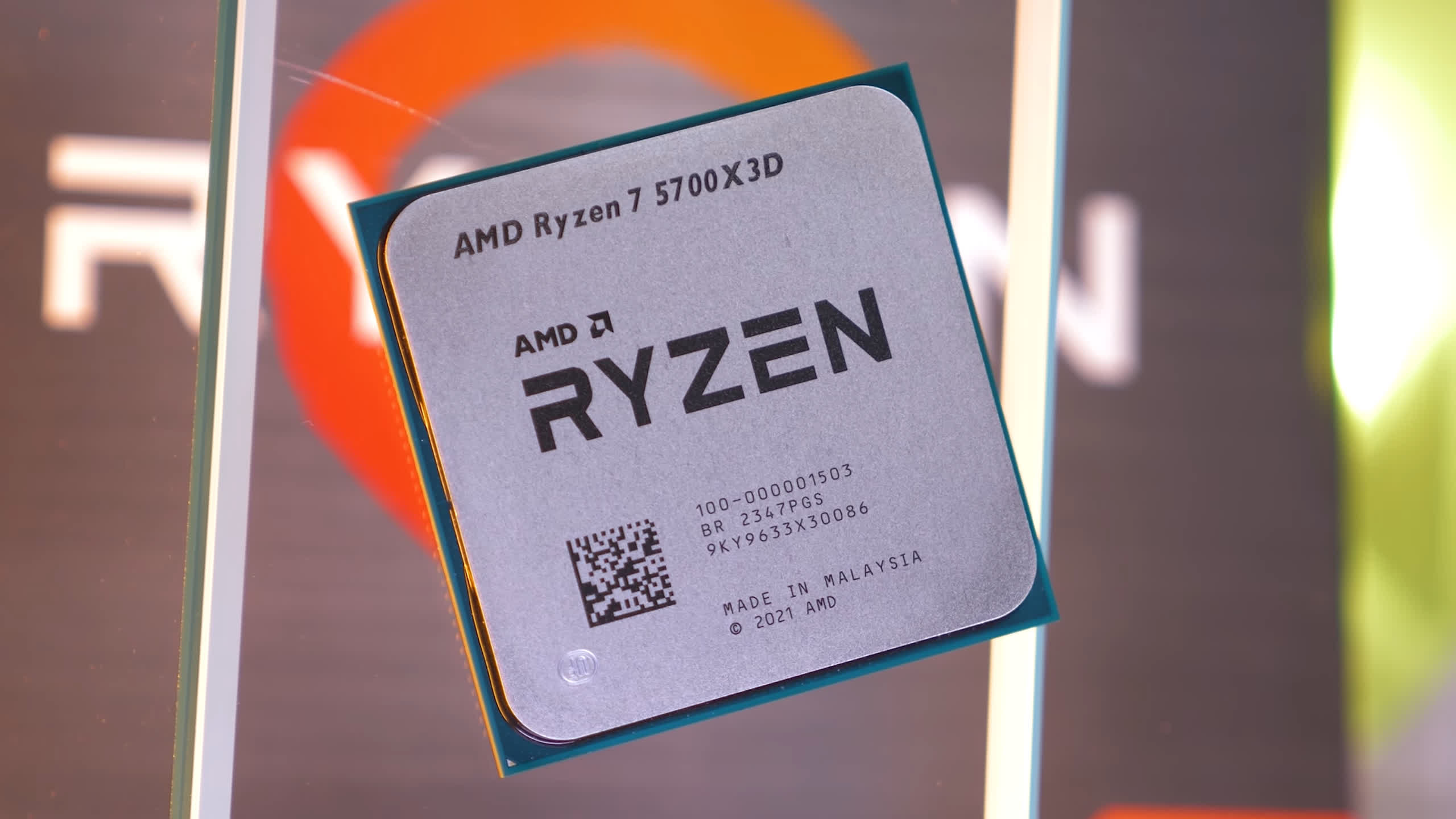
But if you're in need of a new PC or a platform upgrade, you should ignore the 5700X3D and instead buy the Ryzen 5 7600X, which offers similar value with better features and future upgradeability with upcoming AM5 CPUs. Also, keep in mind the Ryzen 5 7600 which costs $200 and delivers similar performance to the 7600X, so that's probably worth a look for some extra savings.
It's great to see AMD still offering more value on the AM4 platform, and it's particularly great news for those who invested in it and are looking for cheap upgrade options. If you are on AM4, let us know if the 5700X3D has enticed you to upgrade, we're keen to read your feedback.
